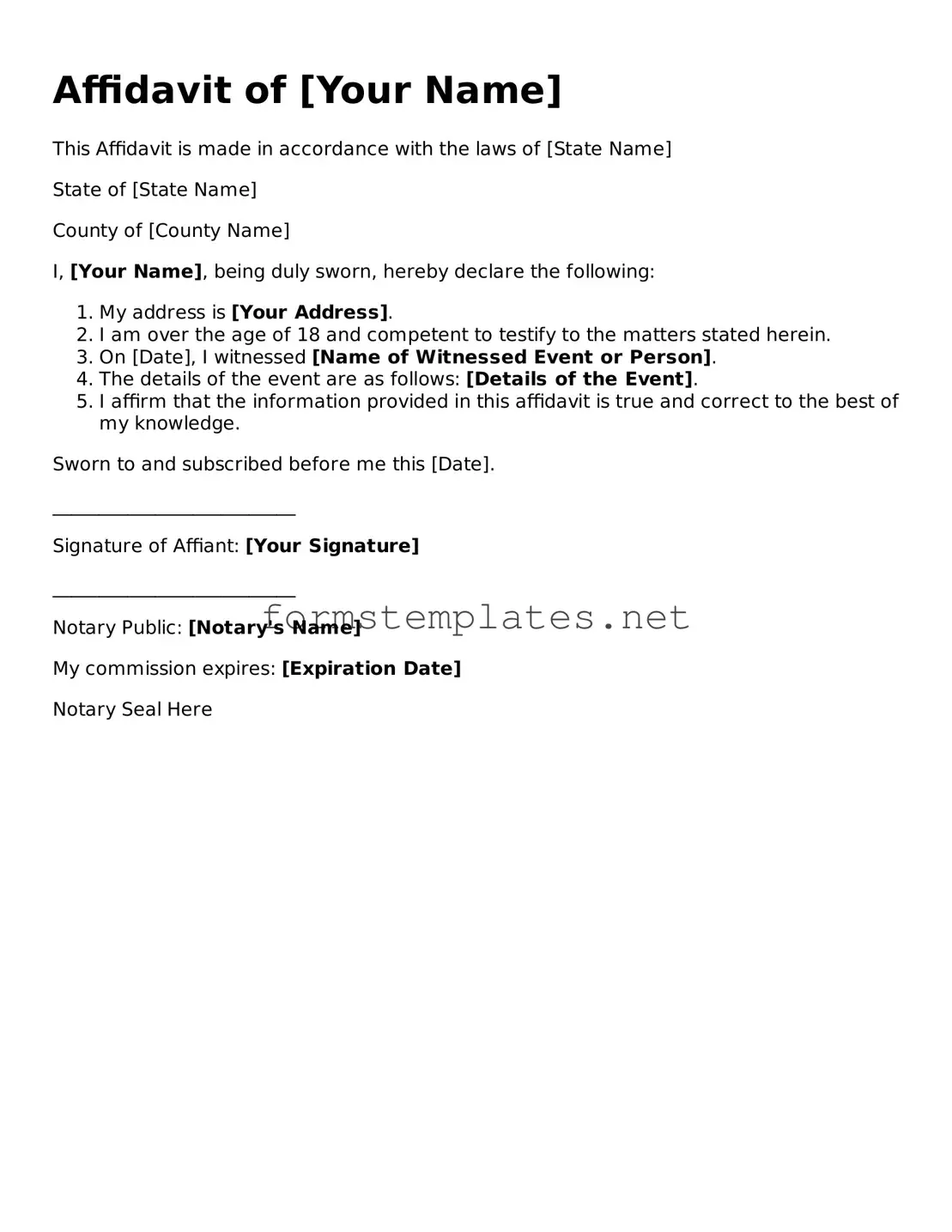What is an affidavit?
An affidavit is a written statement that a person swears to be true. It is often used in legal proceedings as a way to present evidence or facts. The person making the affidavit, known as the affiant, signs the document in the presence of a notary public or another authorized official who can administer oaths.
When do I need to use an affidavit?
Affidavits are commonly used in various situations, including:
-
Providing evidence in court cases
-
Supporting applications for certain licenses or permits
-
Verifying identity or residency
-
Establishing facts in family law matters, such as custody or divorce
Consider your specific needs and consult with a legal expert if you're unsure whether an affidavit is appropriate for your situation.
An affidavit generally includes the following elements:
-
The title of the document (Affidavit)
-
The affiant’s name and address
-
A statement of facts that the affiant swears are true
-
The date and location where the affidavit is signed
-
The signature of the affiant
-
The signature and seal of the notary public or authorized official
Ensure that all information is accurate and complete to avoid any issues later on.
How do I create an affidavit?
Creating an affidavit involves several steps:
-
Identify the purpose of the affidavit.
-
Gather all necessary information and documents.
-
Draft the affidavit, clearly stating the facts you want to include.
-
Sign the affidavit in front of a notary public or authorized official.
It may be beneficial to seek assistance from a legal professional to ensure the affidavit meets all requirements.
Do I need a lawyer to create an affidavit?
While you can create an affidavit without a lawyer, consulting one can provide valuable guidance. A legal professional can help you understand the requirements specific to your situation and ensure that your affidavit is properly drafted and executed.
Can an affidavit be used in any state?
Yes, affidavits can generally be used in all states, but the requirements for drafting and notarizing them may vary. It's important to check the specific laws in your state to ensure compliance with local regulations.
What happens if I lie in an affidavit?
Lying in an affidavit can have serious consequences. It is considered perjury, which is a criminal offense. Penalties may include fines and imprisonment. Always ensure that the information you provide in an affidavit is truthful and accurate.
How long is an affidavit valid?
The validity of an affidavit depends on its purpose and the context in which it is used. Some affidavits may remain valid indefinitely, while others may have a specific time limit. For example, affidavits used in court proceedings may need to be updated if new information arises. Always check the relevant guidelines or consult a legal expert for clarity.
